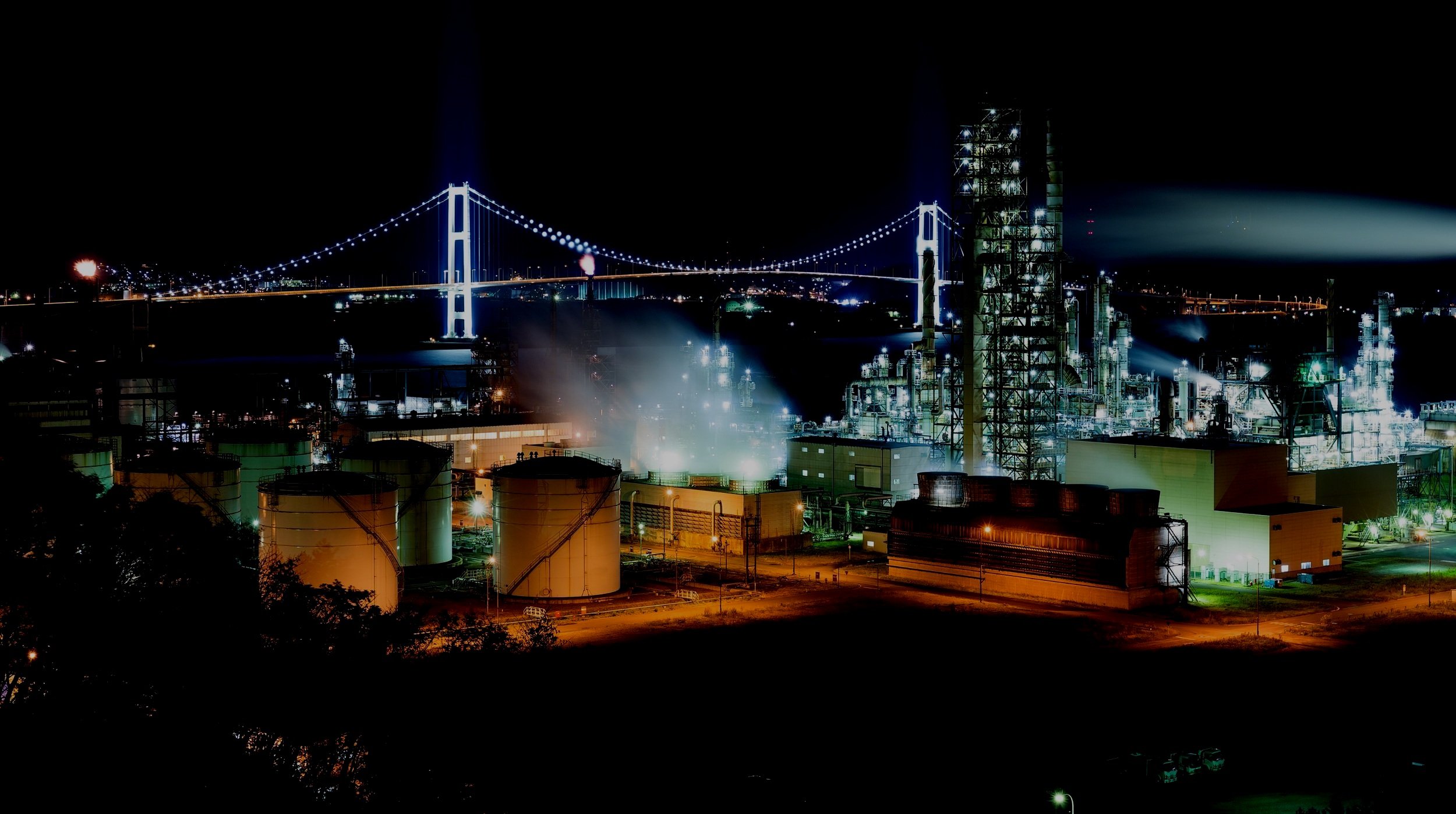
Your Energy Challenges

Electricity
Electricity Demand
Global electricity demand growth is currently expected to continue, the outlook is clouded by economic turbulence and uncertainty over fuel prices.*
Securing Energy Supplies
To secure energy supplies following Russia’s invasion of Ukraine, some European countries have delayed coal phase-out plans and lifted previously imposed restrictions on coal.*
Energy Markets
The world is in the midst of the first truly global energy crisis, triggered by Russia’s invasion of Ukraine, and the electricity sector is one of the most heavily affected,” said IEA Director of Energy Markets and Security“. *
Consumption
Similarly, are fixed assets consuming more energy than is needed , as equipment is being operated outside of operational best practice and/or not being shut down during production downtime
Price Spikes
In the first half of 2022, average natural gas prices in Europe were four times as high as in the same period in 2021 while coal prices were more than three times as high, resulting in wholesale electricity prices more than tripling in many markets.*
Coal Replacing Gas
Due to high gas prices and supply constraints, coal is replacing natural gas for power generation in markets with spare coal plant capacity, particularly in European countries seeking to end their reliance on Russian gas imports. *
Equipment Performance
The global energy crisis and the crippling increase in energy prices has caused organisations to ensure that fixed assets are performing optimally and not using energy outside of operationally acceptable levels and to ensure that equipment is not about to fail facilitating unplanned expensive shut down of production lines.
Soaring Fuel Prices
The IEA confirmed that it is especially evident in Europe, which is experiencing severe energy market turmoil, and in emerging and developing economies, where supply disruptions and soaring fuel prices are putting huge strains on fragile power systems and resulting in blackouts.*
Government Measures
Governments are having to resort to emergency measures to tackle the immediate challenges, but they also need to focus on accelerating investment in clean energy transitions as the most effective lasting response to the current crisis.*
*IEA Gas Market Report Q3 2022

Gas
Gas consumption expected to grow
Global gas consumption is expected to grow over the next three years as Russia’s war in Ukraine pushes up prices and fuels fears of further supply disruptions, according to the IEA’s latest report.*
Gas Supply Warnings
Today’s record high gas prices are causing some gas users to switch to coal and oil, while recent sharp cuts in Russian gas flows to Europe are raising alarms about supplies ahead of the winter.*
Infrastructure Operational in 2025
While there has been a recent surge in gas investment decisions, the resulting infrastructure will not be operational until after 2025.*
Global Gas Demand
Global gas demand is set to rise by a total of 140 billion cubic metres between 2022 and 2025, according to the IEA report.*
Price Spikes
Russia’s unprovoked war in Ukraine is seriously disrupting gas markets that were already showing signs of tightness, according to the IEA, with price spikes starting to become evident, as countries around the world compete for gas shipments.*
Improved Efficiency & Clean Energy
The IEA have noted that the most sustainable response to today’s global energy crisis is stronger efforts and policies to use energy more efficiently and to accelerate clean energy transitions.*
Highest Sector Usage
In terms of sectors, industry is expected to account for 60% of global demand. However, those projections are subject to downward risks from high prices and potentially lower economic growth.*
*IEA Gas Market Report Q3 2022

CO2 Emissions
Introduction
During the day the sun shines through the atmosphere, warming the earth's surface.
The earth's surface cools at night, releasing heat into the atmosphere. However, part of the heat is trapped in the atmosphere by greenhouse gases.
The gases act like the glass walls of a greenhouse, but without this greenhouse effect, temperatures would drop to as low as -18˚C, too cold to sustain life on earth.
Since the Industrial Revolution, human activities have changed the earth's natural greenhouse effect with a dramatic increase in the release of greenhouse gases and scientists agree greenhouse gases are the cause of global warming and climate change.
In the past century the amount of gases has increased dramatically, with the knock-on effect of global warming. In particular, over the last 30 years, global temperatures have accelerated and are now the highest since records began.
Emissions by Gas
Emissions by type of gases commonly used in the manufacturing and production industries.
-
CO2 is released through natural processes, but the atmospheric CO2 concentration has increased by 47% since the Industrial Revolution began in the 1800s, produced primarily through activities such as the burning of fossil fuels and large-scale deforestation. CO2 is the main contributor to climate change.
-
Methane is produced naturally through decomposition. Human activity has displaced the natural balance. Large amounts of methane is released by cattle farming, landfill waste dumps, rice farming and the traditional production of oil and gas.
-
Nitrous oxide is produced through the large-scale use of commercial and organic fertilizers, fossil-fuel combustion, nitric-acid production, and biomass burning.
-
Water vapour is the most abundant greenhouse gas. It increases as the earth's atmosphere warms but unlike CO2, which can remain in the earth’s atmosphere for centuries, water vapour persists for a few days.
-
Hydrofluorocarbons (HFC), perfluorocarbons (PFC) and sulphur hexafluoride (SF6) are solely man-made during industrial processes. They are present in very small concentrations in the atmosphere and trap heat very effectively, meaning they are extremely potent.
Emissions by Sector
Emissions by UK Government Sectors
-
DescripThe burning of coal, natural gas, and oil for electricity and heat is the largest single source of global greenhouse gas emissions.tion text goes here
-
Greenhouse gas emissions from this sector come mostly from agriculture (cultivation of crops and livestock) and deforestation.ion text goes here
-
Greenhouse gas emissions from this sector arise from onsite energy generation and burning fuels for heat in buildings or cooking in homes.
-
Greenhouse gas emissions from this sector primarily involve fossil fuels burned for road, rail, air, and marine transportation. Almost all (95%) of the world's transportation energy comes from petroleum-based fuels, largely gasoline and diesel.description
-
Greenhouse gas emissions from industry primarily involve fossil fuels burned on site at facilities for energy.
-
This source of greenhouse gas emissions refers to all emissions from the Energy sector which are not directly associated with electricity or heat production, such as fuel extraction, refining, processing, and transportation.
Net Zero Targets by Country
Net Zero Targets by Country pre COVID and the Invasion of the Ukraine.
-
President Xi Jinping announced to the UN General Assembly on 22 September 2020 that China would strive to achieve carbon neutrality by 2060. The country would adopt “more vigorous policies and measures” to peak emissions before 2030, he added. Beijing has prioritised clean energy in its recovery from the coronavirus pandemic, but many provinces are building new coal power plants to boost economic growth.
-
In its submission to the UN, the US said in April 2021 that it would reduce its emissions by 50-52% by 2030, compared to 2005 levels, and achieve net zero emissions, no later than 2050. When he was elected president of the US in November 2020 Joe Biden promised a $2 trillion “clean energy revolution” and 100% clean electricity by 2035, but opposition from Republicans and conservative Democrats led to him significantly watering down climate spending in a $1.2 trillion bipartisan package.
-
No published plan.
-
No published plan.
-
Japan enshrined its 2050 net zero target in law in May 2021. Japan is the world’s fifth-largest emitter and relies on coal for a third of its electricity generation. The net zero target requires significant investment in renewables and a complete overhaul of the country’s existing climate strategy which focuses heavily on coal power.
-
Germany enshrined its 2045 net zero target in law in June 2021, after raising its climate ambition following a landmark court ruling the previous month. The cabinet adopted a 65% emissions reduction by 2030, 85-90% by 2040 and net zero emissions by 2045, all compared to 1990 levels. The previous targets were 55% by 2030 and climate neutrality by 2050. To achieve the goals, analysts say Germany must phase out coal by 2030, speed up the transition to electric mobility and increase the carbon price on transport and heating fuel.
-
South Korean president Moon Jae-in formally committed to a 2050 net zero target in October 2020, turning an election promise into a policy pledge. This was later confirmed in a submission to the UN. After his Democratic Party won a landslide victory in April 2020, Moon declared that he would push ahead with his manifesto promise of a Green New Deal to decarbonise the economy by 2050 and end coal financing. It is a big deal for the 7th highest national CO2 emitter. South Korea gets over 40% of its electricity from coal and has been a major financier of overseas coal projects.
-
The UK COP 26 Glasgow Climate Pact confirmed that by revisiting the 2030 Nationally Determined Contributions and strengthening it with information on delivery of its target to reduce all greenhouse gas emissions by at least 68% by 2030 on 1990 levels.

Transportation
Logistics Monitoring
We monitor your fleets “carbon emissions”, with minimal interruption to your business workflow, using our NON INTRUSIVE Technology.
We securely monitor the data we receive from our installed technology via our Platform as a Service Cloud Management Service.
The data that we receive will provide the insight that you need to optimise your fleets operation both from each vehicles performance and planned operational routes versus actual routes taken.
The technology we use is market agnostic, which means we are in a unique position to monitor your “carbon emissions” irrespective of your market., enabling us to maximize value for you.*
Vehicle Agnostic
The majority of modern vehicles possess OBD ports, used by your maintenance specialists to diagnose the condition of your vehicles while carrying out a routine service. We use this port through a port splitter to monitor carbon emissions.
Client Benefits
We are able to monitor your Scope 1 -3 “carbon emissions”.
-
Emissions from sources that an organisation owns or controls directly – for example from burning fuel in our fleet of vehicles (if they’re not electrically-powered).
-
Emissions that a company causes indirectly when the energy it purchases and uses is produced. For example, for our electric fleet vehicles the emissions from the generation of the electricity they're powered by would fall into this category.
-
Encompasses emissions that are not produced by the company itself, and not the result of activities from assets owned or controlled by them, but by those that it’s indirectly responsible for, up and down its value chain. An example of this is when we buy, use and dispose of products from suppliers. Scope 3 emissions include all sources not within the scope 1 and 2 boundaries.

FAQ
Nord Stream 1 & 2 Offline?
In October 2022, the IEA published a report, as the result and driven by the Ukraine invasion in March 2022.
Nord Stream 1 and 2, as reported in the news, are offline for the foreseeable future as the result of the Ukraine invasion, and as a consequence, Europe, needs to work out how to remove the need to rely on Russian Gas.
The pandemic
During the pandemic, demand for energy plummeted. As the industry ground to a halt, so too did supply. But when demand surged after the lockdown lifted, supply did not.
Why have energy prices soared?
Russia’s invasion of Ukraine has often been cited as the main contributing factor in why energy bills have soared everywhere else in the world.
Russia remains an important player in the international energy market, however, so strict sanctions on Russian imports have had a knock-on effect for prices everywhere else.
The EU has banned most Russian oil imports by the end of the year, while the US has banned Russian oil completely. The removal of Russian oil from the market has caused prices to skyrocket.
Why are UK energy prices so high?
The UK imports 40% of its gas from Norway, which has become much more expensive as a result of the drop in supply, as the result of the pandemic.
The price of electricity is tied to the price of gas and the UK generates the majority of its electricity from gas.
Why save energy?
There are no quick fixes to the restriction on gas supply and therefore we face natural gas , electricity and oil price record highs.
Residential energy prices have already increased exponentially, which is contributing to painfully high inflation.
Both Public and Privately owned organisations need to manage energy consumption, as a matter of operational procedure, in order to contain and manage costs. as well as facilitating a reduction in inflation.
Why reduce Carbon Emissions?
CO2 has increased by 47% since the Industrial Revolution began in the 1800s, produced primarily through activities such as the burning of fossil fuels and large-scale deforestation. CO2 is the main contributor to climate change and the increase in global temperature of currently 1.51 F
Manage energy consumption and you manage the reduction in your Carbon Emissions.
How are your assets performing?
In whichever market you operate, you will operate both fixed and potentially transportational assets.
In real-time, do you understand how your assets are being operated against your operating procedures?
Are your assets likely to fail?
Do you understand how your assets are performing against the manufacturers operational specifications?
Your operational procedures
Although you have spent time optimising your operational procedures, you are not on site 24/7 to audit how your processes are being carried out, including the egress and ingress of temperature treated areas.
Do you need to do something?
Increases in inflation and exponential increases in energy costs together with increases in Carbon Emissions associated with generation of electricity, the correct operation of, and the potential mis-performance of your assets means that you need to take action. Doing nothing is not an option.




